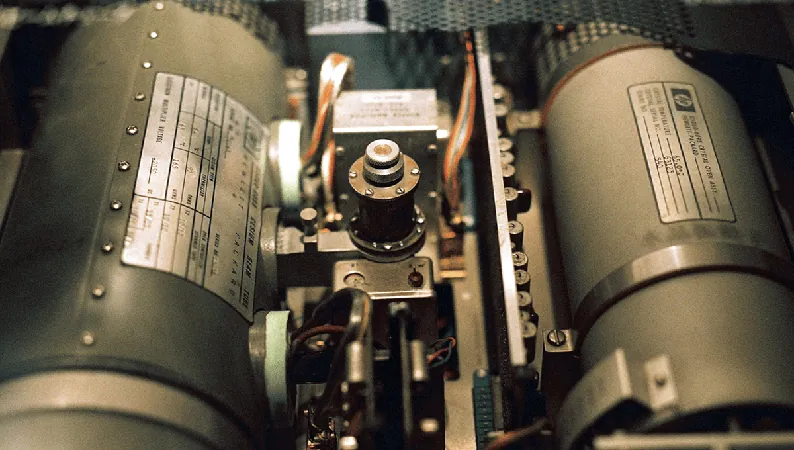
Unlocking the Universe: Can Entangled Atomic Clocks Illuminate the Theory of Everything?
2025-07-27
Author: Yan
In the realm of physics, quantum mechanics reigns supreme at the atomic and subatomic levels, fundamentally reshaping our grasp of the universe. Meanwhile, general relativity—championed by Albert Einstein in 1915—remains our most profound understanding of gravity, describing it as the bending of spacetime around mass rather than a simple force.
Yet, here lies the dilemma: these two pillars of physics refuse to coexist harmoniously.
As noted by Valerio Faraoni, a Physics and Astronomy Professor, and Andrea Giusti, a Postdoctoral Fellow, quantum physics operates on principles that defy conventional logic. For instance, particles are not mere points but behave as waves, governed by the Heisenberg uncertainty principle, which asserts that certain properties—like a particle's position and velocity—cannot both be precisely known at the same time.
Faraoni and Giusti point out the necessity for a theory that reconciles general relativity with quantum mechanics while avoiding the inconsistencies that currently plague our understanding. Regrettably, no attempt to merge the two has been without its shortcomings, hinting that our grasp of both gravity and quantum mechanics must evolve.
Delving deeper into the relationship between spacetime curvature and quantum behavior could illuminate pathways to their unification. However, this exploration encounters a significant hurdle: the relative weakness of gravitational force compared to the other foundational forces.
German physicist Sabine Hossenfelder emphasizes that quantum gravitational effects, while generally deemed unreachable, could be observable in massive objects caught in quantum superpositions. If we can measure the gravitational influence on an object existing in multiple locations simultaneously, we can ascertain whether the gravitational field also exists in a quantum superposition.
In a groundbreaking paper authored by Igor Pikovski and a team from Stevens Institute of Technology, the University of Illinois, and Harvard University, a novel experimental framework is proposed for testing the connection between gravity and quantum mechanics.
Pikovski explains, "The interaction between quantum theory and gravity presents one of the most formidable challenges in contemporary physics, yet it is incredibly intriguing. Quantum networks could enable us to investigate this relationship through actual experimental setups."
The innovative experiment involves utilizing entangled atomic clocks positioned a kilometer apart. While these clocks exist in superposition, they will experience disparate time flows influenced by their relative positions in Earth's gravitational field. This could provide an unprecedented glimpse into the intricate workings of quantum mechanics alongside curved spacetime.
According to the research team, "Our protocol leverages cutting-edge optical atomic clocks and quantum networks currently being designed to distribute quantum entanglement over extensive distances." They propose a method to delocalize an optical atomic clock across multiple locations, enabling it to record diverse times influenced by gravitational variations.
The potential results from this experiment could redefine our understanding of how quantum interference, time dilation, and spacetime curvature interact, marking a significant leap toward merging quantum mechanics with general relativity.
While this mind-bending proposal is still in its infancy, if realized, it promises to be a monumental advancement for physics. Pikovski emphasizes, "We typically assume that quantum theory is universal, yet we're unsure if this holds true. Gravity might alter the behavior of quantum mechanics, and emerging quantum technologies may allow us to test such theories effectively."


 Brasil (PT)
Brasil (PT)
 Canada (EN)
Canada (EN)
 Chile (ES)
Chile (ES)
 Česko (CS)
Česko (CS)
 대한민국 (KO)
대한민국 (KO)
 España (ES)
España (ES)
 France (FR)
France (FR)
 Hong Kong (EN)
Hong Kong (EN)
 Italia (IT)
Italia (IT)
 日本 (JA)
日本 (JA)
 Magyarország (HU)
Magyarország (HU)
 Norge (NO)
Norge (NO)
 Polska (PL)
Polska (PL)
 Schweiz (DE)
Schweiz (DE)
 Singapore (EN)
Singapore (EN)
 Sverige (SV)
Sverige (SV)
 Suomi (FI)
Suomi (FI)
 Türkiye (TR)
Türkiye (TR)
 الإمارات العربية المتحدة (AR)
الإمارات العربية المتحدة (AR)